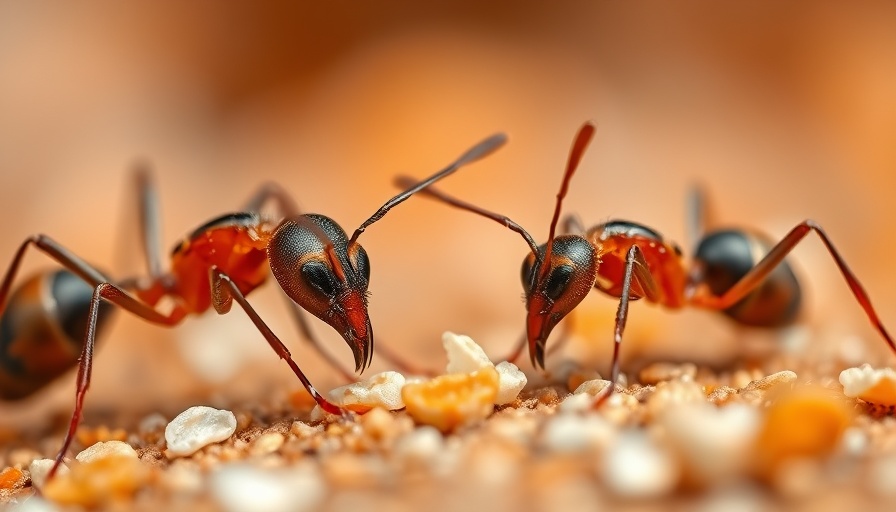
The Ant's Olfactory Superpower: Gene Regulation Uncovered
Ants have long been celebrated for their remarkable abilities, especially their strength and unity within colonies. However, a recent breakthrough has revealed a pivotal aspect of their biology that allows these tiny creatures to perform some of the most complex social behaviors: their sense of smell. Researchers from Rockefeller University have discovered how clonal raider ants maintain the clarity and precision of their olfactory signals through a unique genetic mechanism. This important finding not only unravels a decades-old mystery but also showcases the fascinating evolutionary adaptations of ants.
Understanding the Mechanism of Ant Smell
The essence of an ant's olfactory ability lies in a well-orchestrated system where each sensory neuron expresses only one receptor tuned to a specific chemical. This precision ensures that the scents they detect remain unconfused and actionable. The research team, led by Daniel Kronauer, found that ants utilize a genetic safeguard that silences surrounding odor receptor genes. Unlike species such as fruit flies, which activate genes randomly to achieve this clarity, ants employ a more sophisticated strategy, making it essential for the successful operation of their pheromone-based communication systems.
Why This Discovery Matters
This research is crucial for various fields including biotechnology, neurobiology, and environmental science. The insights into the olfactory mechanics of ants may pave the way for developing advanced sensors and artificial intelligence systems that mimic ant behaviors. Additionally, understanding how these insects can rapidly evolve new olfactory capabilities could provide insights that are beneficial for industries reliant on scent detection such as food production, agriculture, and even public safety.
Application in Tech and Innovation
Boasting an extensive repertoire of odorant receptor genes, ants do not just rely on their evolutionary past; they continuously adapt to their chemical environment. Such genetic ingenuity can inspire new technologies in sensor development and AI, fundamentally enhancing how various industries approach environmental interaction. For consumers and tech enthusiasts alike, the implications of this research extend far beyond biology, impacting future innovation and problem-solving methodologies.
Comparative Advantage: Ants vs. Other Species
When we draw comparisons among various species, it becomes clear how unique ants are in their genetic makeup. While mammals shuffle chromatin to find accessibility among receptors, ants' method reflects a highly evolved strategy of gene regulation that ensures adaptability and precision. The importance of this lies in the necessity for clear communication within ant colonies, emphasizing the social complexity that parallels many human social organizations. The exploration of these systems cultivates a better understanding of cooperative behavior in both ants and humans.
Future Insights: What Lies Ahead?
The findings about the gene regulation in ants paint a promising picture for future research. As we venture deeper into the realms of genetic science and bioengineering, the methodologies employed by ants could serve as blueprints for enhancing human technological capacities. For those intrigued by the intersection of biology and technology, it is worth noting that the nuances revealed by this research-based approach could lead to innovations that are only beginning to be imagined.
Living in the Context of Dallas: The Broader Implications
As we examine these scientific discoveries, it's crucial to consider their relevance to urban environments like Dallas, where innovation and technology intersect with everyday living. For those living in Dallas, especially in thriving areas such as the Arts District or the burgeoning tech sectors, the implications of research like this could eventually influence local industries through advancements in biotechnology, sensor technology, and more. Dallas, a city known for its lively lifestyle and communities, emerges as a potential hub for integrating such innovative technologies into daily life.
Conclusion: An Invitation to Explore
The intricate relationship between genetic regulation and olfactory capabilities in ants reveals a universe of possibilities for scientific inquiry and technological evolution. As we understand these individual components better, we invite readers to reflect on the broader applications of this knowledge. Imagine a future where the biotechnology sector in Dallas thrives on insights derived from nature’s workflows, enhancing not only local industry but improving quality of life for all its residents. Stay engaged and be part of the dialogue on how we can leverage such discoveries in our communities.
 Add Element
Add Element  Add Row
Add Row 



Write A Comment